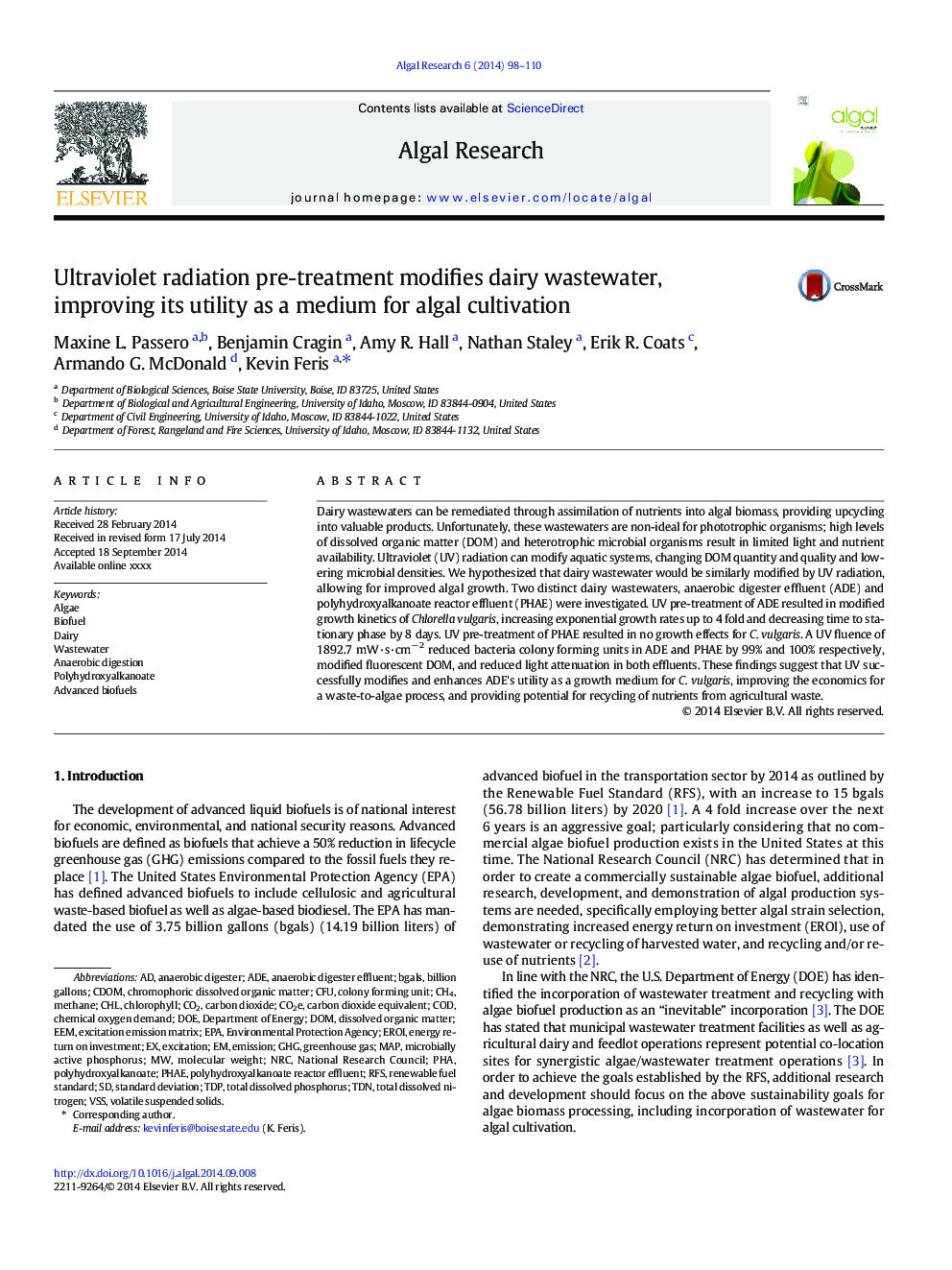| Article ID | Journal | Published Year | Pages | File Type |
|---|---|---|---|---|
| 10687524 | Algal Research | 2014 | 13 Pages |
Abstract
Dairy wastewaters can be remediated through assimilation of nutrients into algal biomass, providing upcycling into valuable products. Unfortunately, these wastewaters are non-ideal for phototrophic organisms; high levels of dissolved organic matter (DOM) and heterotrophic microbial organisms result in limited light and nutrient availability. Ultraviolet (UV) radiation can modify aquatic systems, changing DOM quantity and quality and lowering microbial densities. We hypothesized that dairy wastewater would be similarly modified by UV radiation, allowing for improved algal growth. Two distinct dairy wastewaters, anaerobic digester effluent (ADE) and polyhydroxyalkanoate reactor effluent (PHAE) were investigated. UV pre-treatment of ADE resulted in modified growth kinetics of Chlorella vulgaris, increasing exponential growth rates up to 4 fold and decreasing time to stationary phase by 8 days. UV pre-treatment of PHAE resulted in no growth effects for C. vulgaris. A UV fluence of 1892.7 mW·s·cmâ 2 reduced bacteria colony forming units in ADE and PHAE by 99% and 100% respectively, modified fluorescent DOM, and reduced light attenuation in both effluents. These findings suggest that UV successfully modifies and enhances ADE's utility as a growth medium for C. vulgaris, improving the economics for a waste-to-algae process, and providing potential for recycling of nutrients from agricultural waste.
Keywords
ChlEEMNRCPHARFSGHGCH4EPACDOMADEDOETDPTDNCFUCO2eAnaerobic digester effluentEROIVSsEnvironmental Protection AgencyRenewable Fuel StandardEmissionstandard deviationenergy return on investmentchemical oxygen demandAlgaeCarbon dioxideChlorophyllBiofuelAdvanced biofuelsNational Research CouncilWastewaterDOMDairyexcitation emission matrixDissolved organic matterchromophoric dissolved organic matterMethaneCarbon dioxide equivalentVolatile suspended solidsmapAnaerobic digestionExcitationAnaerobic digesterDepartment of EnergyMolecular weightpolyhydroxyalkanoateCodCO2total dissolved phosphorustotal dissolved nitrogencolony forming unitGreenhouse gas
Related Topics
Physical Sciences and Engineering
Energy
Renewable Energy, Sustainability and the Environment
Authors
Maxine L. Passero, Benjamin Cragin, Amy R. Hall, Nathan Staley, Erik R. Coats, Armando G. McDonald, Kevin Feris,
